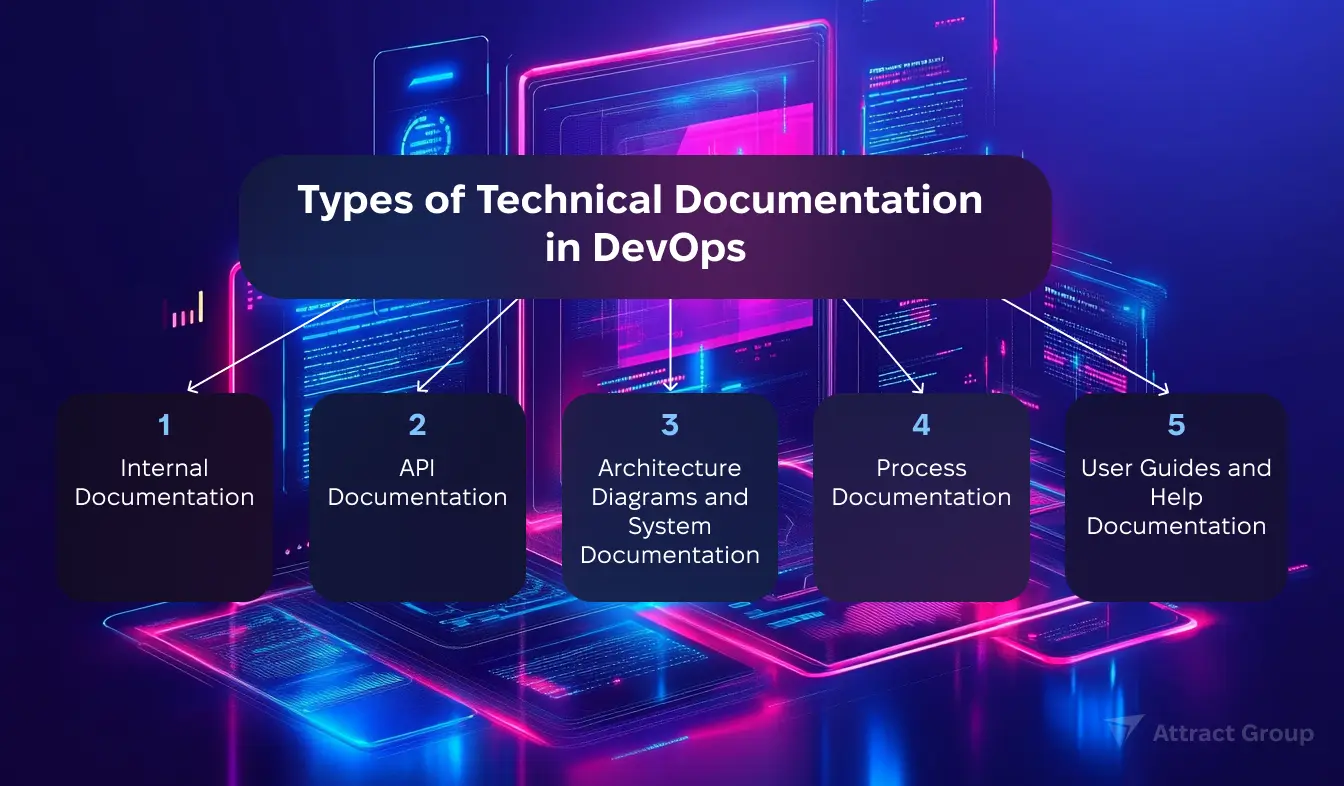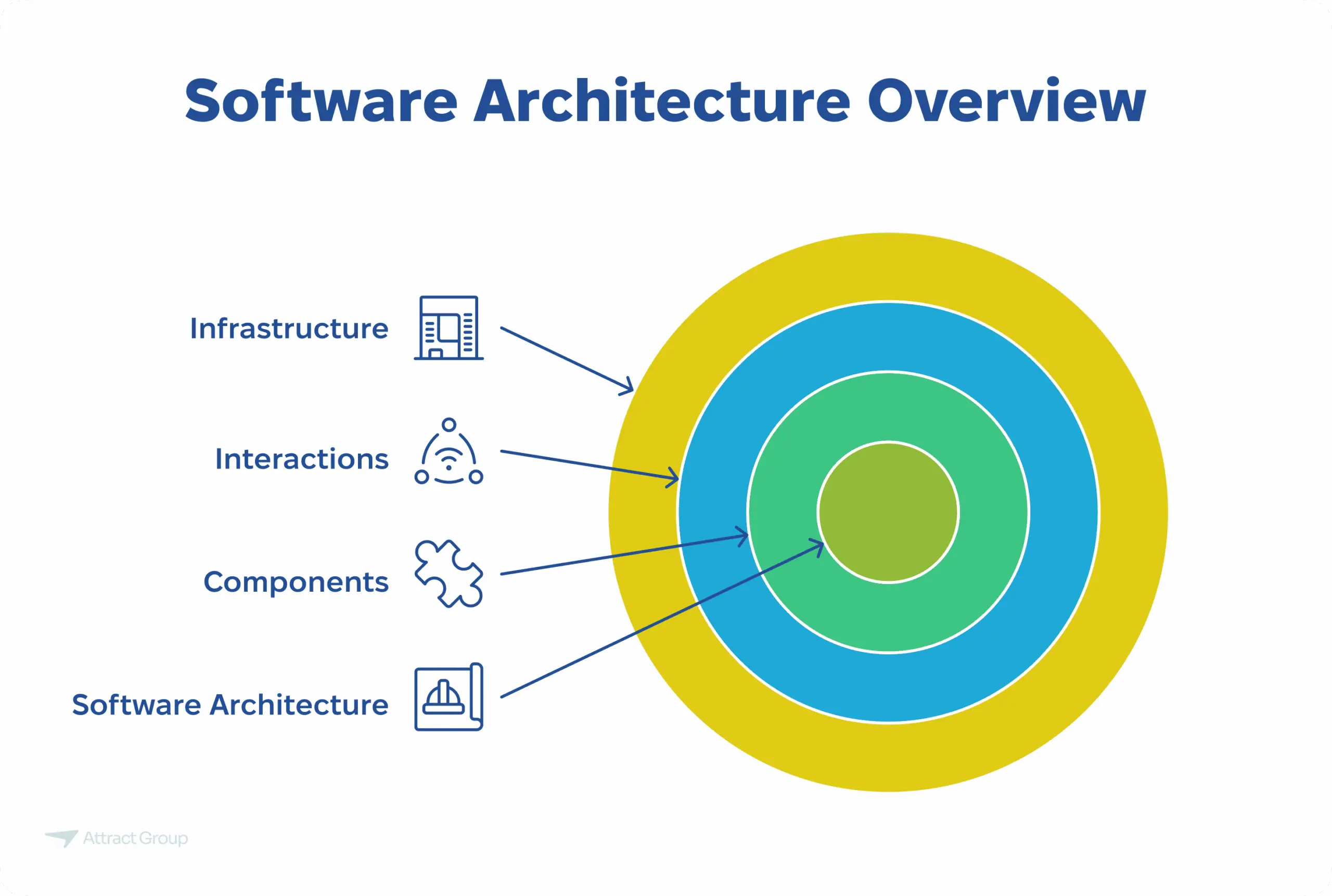Mastering Technical Documentation in DevOps
 12 July 2024
12 July 2024🔊 Listen to the Summary of this article in Audio
The Importance of Documentation
Technical documentation in DevOps isn’t just about keeping records; it’s the backbone of successful DevOps practices. It helps DevOps teams, fosters developer collaboration, and guides the entire development lifecycle. From internal documentation to API guides, documentation encapsulates the collective knowledge of the team, making complex systems understandable and manageable.
Why Documentation is Key
Documentation plays a crucial role in DevOps for several reasons. First, it ensures that all team members, from developers to project managers, have the information they need to perform their tasks efficiently. This is especially crucial in DevOps environments, where operations and development teams continuously collaborate. Effective documentation reduces the learning curve for new team members, facilitating quicker onboarding and integration into ongoing projects.
Furthermore, documentation in DevOps serves as a central repository of knowledge, hosting best practices, coding guidelines, and software solution details. The documentation makes it easier to maintain consistency across the project’s lifecycle, from development through deployment to maintenance. Documentation also plays a vital role in automation, a key component of DevOps, by detailing the setup and configuration of automation tools and workflows.
Documentation and the Development Lifecycle
Throughout the development lifecycle, technical documentation guides every step. It ensures that developers, testers, and operations teams understand the software’s architecture, dependencies, and deployment processes. This comprehensive understanding is crucial for troubleshooting, performance optimization, and ensuring that the software product not only meets the end user’s needs but also remains resilient and scalable.
Moreover, in the context of agile development and continuous delivery models that characterize DevOps, documentation provides a dynamic blueprint that evolves with the project. It supports DevOps processes by documenting changes and updates, ensuring that the entire team is aligned with the project’s current state and future direction.
Types of Technical Documentation in DevOps

In the DevOps ecosystem, documentation comes in various forms, each serving a specific purpose but together providing the comprehensive knowledge base needed for the smooth functioning of development and operations. Understanding the types of technical documentation and the role of technology and professionals in creating and maintaining these documents is key to leveraging them effectively.
Key Documentation Types
Internal Documentation
Internal documentation is pivotal for the day-to-day operations of a DevOps team. It includes code comments, README files, and development guides that help developers understand and contribute to the project. This type of documentation is crucial for onboarding new team members and ensuring that everyone has the information they need to complete tasks efficiently.
API Documentation
API documentation is essential for both internal developers and external partners who need to interact with your software’s interfaces. It details how to use the APIs, including request formats, endpoint URLs, available parameters, and expected responses. Quality API documentation can significantly reduce the learning curve for new developers and is critical for facilitating seamless integration between different software components.
Architecture Diagrams and System Documentation
These documents provide a high-level overview of the software’s architecture, including its components, how they interact, and the infrastructure it relies on. This is vital for understanding the system’s design and for planning future expansions or troubleshooting existing issues.

Process Documentation
Process documentation outlines the workflows, practices, and standards that the DevOps team follows. This includes coding standards, branch management strategies, continuous integration and continuous delivery (CI/CD) pipelines, and deployment practices. Having this documentation helps maintain consistency and efficiency in the team’s work.
User Guides and Help Documentation
While not always directly managed by DevOps teams, user guides, and help documentation are crucial for ensuring that the end-users can effectively use the software. This documentation might be developed with the help of technical writers and user experience specialists.
Our expert team can help you implement a comprehensive documentation system tailored to your DevOps processes, enhancing collaboration and efficiency.
Best Practices for DevOps Documentation
Effective documentation is a cornerstone of DevOps, ensuring that all team members are aligned and can efficiently contribute to the project. Implementing best practices in documentation creation and maintenance not only supports current development efforts but also prepares your team for future challenges. Here are key strategies to ensure your DevOps documentation serves its intended purpose across the organization.

Start with a Clear Purpose
Every piece of documentation should have a clear purpose. Whether it’s guiding developers through the codebase, explaining the use of an API, or detailing deployment procedures, the objective should be evident. This focus ensures that the documentation is relevant and provides value.
Make It Accessible and Searchable
Documentation must be easily accessible to those who need it. This means organizing documents in a central location, such as a wiki or a dedicated documentation portal. Ensuring that the documentation is searchable is equally important, as it allows team members to quickly find the information they need without sifting through irrelevant data.
Use Clear, Concise Language
The language used in documentation should be clear and concise, avoiding jargon and complex terms whenever possible. This makes the content accessible to team members with varying levels of expertise and from different backgrounds. Including examples and visuals, like screenshots or diagrams, can further clarify complex concepts.
Involve the Entire Team
Documentation should not be the sole responsibility of technical writers or developers. Encouraging contributions from all team members, including project managers, QA engineers, and operations staff, ensures that the documentation covers all aspects of the project and benefits from diverse perspectives.

Automate Where Possible
Leverage automation tools to help keep documentation updated. This includes tools that can automatically generate API documentation from code comments or update architecture diagrams as the system evolves. While not all aspects of documentation can be automated, integrating automation where feasible can significantly reduce the manual effort required to maintain documentation.
Document as You Go
Encourage the practice of updating documentation as part of the development process, rather than treating it as an afterthought. This means developers should update API documentation as they modify endpoints, architects should revise system diagrams as the architecture evolves, and project managers should adjust process documents as workflows change. This “document as you go” approach ensures that documentation keeps pace with the project’s development.
Leverage Version Control
Version control is not just for code. Applying version control principles to documentation allows you to track changes over time, understand the rationale behind updates, and roll back to previous versions if necessary.
Tools and Technologies for Documenting in DevOps

In the realm of DevOps, efficient and accessible documentation is facilitated by a suite of specialized tools and technologies. These solutions enable teams to create, share, and maintain essential technical documents with ease, fostering a collaborative and informed environment. Here’s a consolidated look at some of the pivotal documentation tools, including how GitHub seamlessly integrates into this ecosystem, enhancing documentation practices alongside code management.
Wiki Systems for Collaborative Documentation
Platforms like Confluence and MediaWiki offer robust wiki systems tailored for managing a wide array of DevOps documentation. These platforms support collaborative editing, versioning, and structured navigation, making them suitable for both technical documentation and project management content. Their user-friendly nature ensures that all team members can contribute to and access critical information effortlessly.
Markdown Editors
Markdown has emerged as a de facto standard for creating lightweight, easy-to-edit documentation for DevOps. Editors such as MarkdownPad and Typora simplify the process of writing in Markdown, providing live previews and formatting tools. GitHub, a cornerstone of DevOps practices for code sharing and version control, extends significant support for Markdown, allowing teams to integrate documentation directly within repositories. This ensures that README files, wikis, and other documentation live alongside the code, facilitating easy updates and consistent versioning.
API Documentation Generators
Tools like Swagger (OpenAPI) and Apiary are instrumental in automating the generation of API documentation. By allowing developers to annotate source code or API descriptions, these tools produce accurate and up-to-date documentation, streamlining developer onboarding and external integrations. GitHub complements these generators by serving as a repository for the generated documentation, ensuring it is version-controlled and easily accessible alongside the corresponding code.
Let our skilled developers integrate cutting-edge documentation tools into your existing DevOps workflow, ensuring seamless knowledge sharing and improved productivity.
Enhancing Productivity with Effective Documentation
Well-maintained documentation not only paves the way for improved productivity but also streamlines the onboarding of new team members, ensuring that they quickly become effective contributors to the project. By adopting a strategic approach to managing documentation, DevOps teams can transform documentation from a passive resource into an active asset that propels development processes forward.
Boosting Productivity through Quality Documentation
Facilitating Rapid Onboarding
In the fast-paced DevOps environment, bringing new team members up to speed quickly is essential. Quality documentation, encompassing detailed software documentation, process documentation, and online documentation, provides new hires with the information they need to understand the project’s ecosystem. This comprehensive knowledge base enables them to contribute to documentation and development efforts more swiftly, effectively reducing the ramp-up time.
Enhancing Collaboration and Knowledge Sharing
Effective documentation fosters a culture of knowledge sharing among DevOps teams. By making technical details and project workflows transparent, documentation ensures that all team members, regardless of their role, have access to the same base of knowledge. This shared understanding is critical for DevOps success, as it enables teams to collaborate more effectively and make informed decisions.
Supporting Continuous Improvement
In modern DevOps practices, the drive for continuous improvement is ever-present. Maintaining quality documentation that is easy to navigate allows DevOps teams to quickly identify areas for enhancement in both the development and operations phases. Documentation software solutions and tools like ChatGPT or LLMs can assist in analyzing and updating existing documentation, ensuring that it evolves in tandem with the project.
Managing Documentation for Development Efficiency
Implementing Documentation Reviews
Regular reviews of documentation are crucial to ensure its accuracy and relevance. Incorporating documentation reviews into the software development cycles — much like code reviews — helps in identifying outdated or incomplete information. Dedicated technical writers alongside development and operations teams can collaboratively update the content, making sure that it reflects the latest project status and best practices.

Leveraging Automation and AI
To reduce the manual burden of maintaining documentation, DevOps organizations can employ automation tools and AI technologies. Automation can streamline the generation of API documentation and update logs, whereas AI, through solutions like ChatGPT, can offer assistance in refining the content and ensuring its consistency across various documentation types. This not only improves the documentation process but also enhances the quality of documentation.
Encouraging Team Contributions
Creating a collaborative environment where all team members are encouraged to contribute to documentation ensures that the documentation remains comprehensive and up-to-date. Tools that facilitate easy contributions, such as wikis or GitHub, empower software teams and operations teams to share insights and add value. Moreover, making documentation contributions part of the project’s workflow reinforces its importance and ensures ongoing engagement from the team.
Centralizing Documentation Access
Ensuring that documentation is centrally located and easily accessible is fundamental. Online documentation platforms and intranet solutions can serve as a single source of truth for the team, making it simpler for members to find the information they need without delay. This centralization enhances efficiency by reducing the time spent searching for project details or technical guidelines.
Integrating Automation in Documentation
By integrating automation into the documentation process, DevOps teams can significantly alleviate the manual effort involved, ensuring that documentation remains current with minimal overhead. Automation in documentation not only enhances efficiency but also improves the accuracy and consistency of the information provided.
Continuous Integration and Continuous Deployment (CI/CD) Pipelines
Incorporating documentation tasks into CI/CD pipelines allows for the automatic generation and deployment of documentation alongside software builds. For example, whenever a new version of the software is deployed, the pipeline can trigger an automated process to generate and publish the latest API documentation or update versioning information in the project’s wiki. This ensures that documentation is a natural and integral part of the development and deployment process, reducing the likelihood of documentation becoming an afterthought.
Code Documentation Standards and Linters
Leveraging linters and documentation standards within the development environment can automate the enforcement of quality documentation at the code level. Tools like JSDoc for JavaScript or Doxygen for C++ can be configured to automatically generate documentation from comments in the code, ensuring that developers include necessary documentation as part of their coding tasks. Additionally, incorporating documentation quality checks into code review processes encourages developers to maintain high standards for both code and the accompanying documentation.
Documentation as Code
Adopting a “documentation as code” approach allows for the use of version control systems like Git to manage changes in documentation, similar to how code is managed. This approach supports automation by enabling the use of version control hooks to trigger documentation updates automatically. For example, pre-commit hooks can ensure that documentation is reviewed and updated before any code changes are committed, ensuring synchronization between code and documentation.
Keeping Documentation Alive: Strategies for Continuous Improvement

To ensure that documentation remains a vibrant part of the DevOps culture and not just an afterthought, it’s essential to adopt strategies for continuous improvement.
Making Documentation a Living Entity
Embed Documentation into the DevOps Workflow
Integrating documentation tasks directly into the DevOps workflow ensures that it remains current and relevant. This can be achieved by including documentation reviews as part of the sprint cycles, requiring updates to documentation before new features or changes are deployed. By treating documentation as part of the product works, DevOps teams underscore its importance to the success of the project.
Regular Reviews and Updates
Since DevOps is characterized by rapid development and frequent changes, documentation can quickly become outdated if not maintained. Scheduling regular reviews and updates of the documentation ensures it remains relevant and useful. This could be part of the sprint review process in agile teams, where documentation updates are treated as part of the development cycle.
Foster a Culture of Documentation Contributions
Encouraging all team members to contribute to documentation. Tools and practices that make contributions easy and accessible, can significantly improve the team’s engagement with documentation. Recognizing and rewarding contributions can further motivate team members to share their insights and updates.
Utilizing Feedback Loops for Documentation Excellence
Implement Feedback Mechanisms
Feedback loops are essential for maintaining and enhancing the quality of documentation. This can include feedback from end users, who might use user guides or API documentation, as well as internal feedback from within the organization. Implementing tools such as comment sections in online documentation or regular documentation retrospectives can help gather valuable insights and identify areas for improvement.
Artificial Intelligence
Modern technical tools, such as analytics platforms and AI, can provide insights into how documentation is being used and highlight areas that may need updates or expansion. For example, page view analytics can indicate which documents are most frequently accessed, suggesting where to focus improvement efforts. AI tools can assist in identifying gaps in documentation or suggest areas where additional clarity might be needed.
Documentation Audits
Periodically conducting documentation audits is key to ensuring that all documentation remains relevant and up-to-date. This involves assessing the existing documentation against current DevOps practices, software functionality, and user requirements. Audits can help identify obsolete, redundant, or missing documentation, guiding the team on where to concentrate their documentation efforts.
Our team of DevOps specialists can help you implement best practices in documentation and automation, enhancing your software development lifecycle.
In Conclusion
Effective documentation serves as a critical component of successful DevOps practices, underpinning the seamless collaboration between development and operations, facilitating swift onboarding of new team members, and ensuring that both software solutions and processes are transparent and accessible.
Key Takeaways for DevOps Success
Documentation as a Pillar of DevOps Culture: Embracing documentation as an integral part of the DevOps culture reinforces its value to the team and the organization. Through dedicated technical writers, collaborative contributions from all team members, and the strategic use of modern tools and technologies, documentation can thrive as a dynamic, living part of the development lifecycle.
Continuous Improvement through Documentation: Maintaining and improving documentation is not a one-time effort but a continuous process that parallels software development cycles. By integrating regular reviews, updates, and feedback mechanisms into the DevOps workflow, teams can ensure that their documentation remains relevant, accurate, and useful.
Leveraging Tools and Automation: The use of documentation tools, AI like ChatGPT, and automation within the DevOps environment streamlines the creation and maintenance of documentation. This not only enhances productivity but also ensures that documentation evolves in lockstep with the software it describes.
Collaboration and Accessibility: Encouraging a culture where documentation contributions are valued and facilitated across the team promotes a sense of ownership and responsibility towards maintaining high-quality documentation. Ensuring that documentation is easily accessible and navigable makes it a more effective resource for all stakeholders.
As DevOps continues to evolve, the role of documentation will only grow in importance. The ability to write, maintain, and leverage quality documentation quickly becomes a differentiator between teams that struggle and those that thrive. By mastering documentation practices, DevOps organizations can not only improve their internal processes but also enhance the end user’s experience, ultimately contributing to the overall success of their software solutions.









